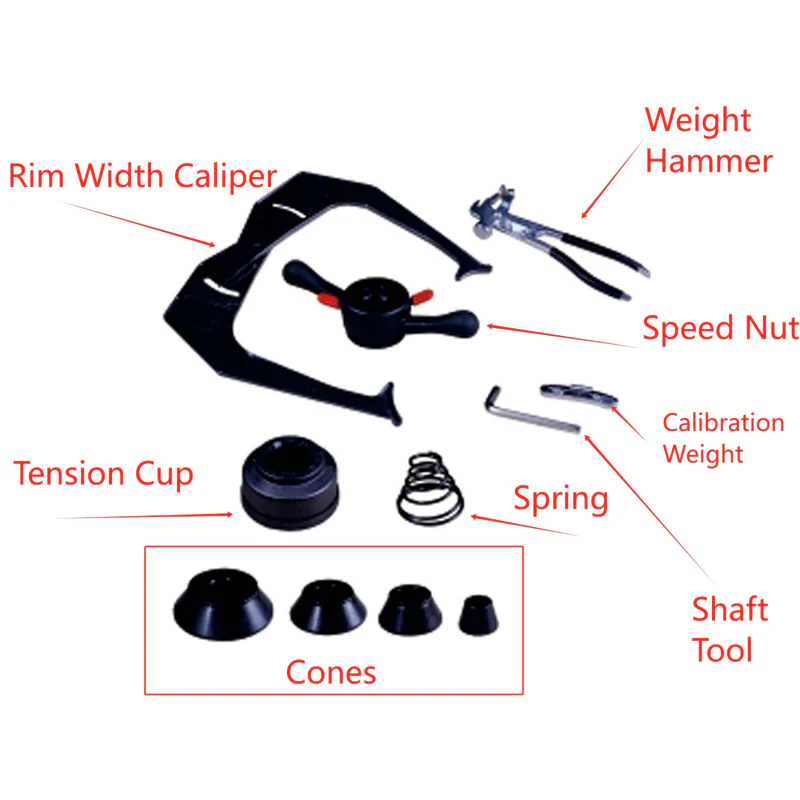Efficient wheel balancing is essential for vehicle maintenance, ensuring smooth rides, reduced tire wear, and enhanced road safety. For automotive workshops, investing in the right wheel balancer parts plays a vital role in maintaining the accuracy and longevity of balancing equipment. However, selecting the best parts for your specific business needs requires careful consideration of several factors. This article will explore the importance of wheel balancer parts, the types of parts available, and key aspects to look for when making a purchase.
Understanding the Role of Wheel Balancer Parts
Wheel balancers are critical tools in the automotive service industry. They ensure that the weight of the tire and wheel assembly is distributed evenly, allowing vehicles to run without vibrations. Over time, wheel balancers undergo wear and tear, and replacing or upgrading the necessary parts is crucial to maintain peak performance.
Using high-quality wheel balancer parts enhances accuracy, reduces maintenance downtime, and ensures customer satisfaction. Whether you’re running a small garage or a large auto shop, understanding the different parts of a wheel balancer is key to choosing replacements or upgrades effectively.
Types of Wheel Balancer Parts
To select the best wheel balancer parts, it’s essential to know the various components that contribute to the overall functioning of a wheel balancer. Below are some of the most common parts:
Wheel Balancer Cones
Wheel balancer cones are used to center the wheel on the machine. They come in various sizes to accommodate different hub diameters. A poorly fitted cone can result in inaccurate balancing, making this part one of the most critical for precision.
Mounting Adapters
Adapters secure the wheel to the balancer. Some common types include standard, truck, and specialty adapters for different vehicle types. Choosing the right adapter for your business ensures versatility in handling various wheels.
Calibration Weights
Calibration weights are used to calibrate the wheel balancer for consistent accuracy. Using incorrect or worn calibration weights can compromise balancing results, leading to dissatisfied customers.
Wheel Balancer Shaft
The shaft holds the wheel and other components in place during the balancing process. A durable, well-maintained shaft minimizes vibration and ensures proper alignment for precise results.
Wheel Weight Pliers and Tools
Wheel weight pliers are essential tools for adding and removing wheel weights efficiently. Investing in high-quality pliers ensures quick adjustments without damaging the wheel or weight.
Wheel Balancer Sensors
Modern wheel balancers rely on sensors to measure imbalances accurately. Faulty or worn sensors can lead to inaccurate readings, making it important to replace them promptly with high-quality alternatives.
Electronic Control Boards
Control boards form the brain of electronic wheel balancers. A damaged or outdated control board can disrupt the functioning of the machine. Choosing compatible and reliable boards is key to smooth operations.
Factors to Consider When Choosing Wheel Balancer Parts
Choosing the best wheel balancer parts for your business involves evaluating several critical factors. By keeping these aspects in mind, you can ensure that your investment enhances efficiency and reliability.
Compatibility with Existing Equipment
The most crucial consideration is compatibility. Ensure that the parts you purchase match your wheel balancer’s make and model. Using incompatible parts may result in poor performance, machine damage, or voided warranties.
Quality and Durability
Opt for high-quality parts made from durable materials. Cheap or low-quality parts may wear out quickly and compromise the machine’s accuracy, leading to repeated replacements and higher long-term costs.
Precision and Accuracy
Precision is the backbone of wheel balancing. Look for parts that meet high accuracy standards to ensure optimal balancing results. For example, well-machined cones and shafts ensure proper centering and alignment.
Supplier Reputation
Work with reputable suppliers known for offering premium wheel balancer parts. Research reviews, ask for recommendations, and verify the supplier’s credibility to ensure you are purchasing genuine, high-quality products.
Cost-Effectiveness
While cost is an important factor, it should not come at the expense of quality. Consider the overall value of the parts, factoring in their durability, warranty, and ability to reduce machine downtime. Investing in superior-quality parts often saves money in the long run.
Ease of Installation
Parts that are easy to install can save you time and reduce the need for professional assistance. Check whether the parts come with instructions or support to facilitate hassle-free installation.
Warranty and Support
Choose parts that come with a warranty or guarantee. A warranty demonstrates the manufacturer’s confidence in their product and provides assurance that replacements will be covered if any issues arise.
Common Issues with Wheel Balancers and How Parts Can Solve Them
Over time, wheel balancers may exhibit problems that impact their performance. Choosing the right parts can resolve these issues effectively. Below are some common challenges and their solutions:
Vibration During Operation
If your wheel balancer vibrates excessively, it could indicate a worn shaft or mounting adapter. Replacing these parts with high-quality, precision-engineered alternatives can resolve the issue and restore smooth operation.
Inaccurate Balancing Results
Faulty sensors, damaged calibration weights, or improperly fitting cones often lead to inaccuracies in wheel balancing. Upgrading to reliable wheel balancer parts will ensure accurate measurements and consistent performance.
Malfunctioning Electronics
Control boards or sensors can fail over time, causing the machine to malfunction. Replacing these electronic parts with compatible, high-quality components can quickly resolve the problem.
Worn Tools
Using worn-out wheel weight pliers or tools can result in damaged weights or wheels. Investing in durable, ergonomic tools can improve efficiency and prevent unnecessary damage.
The Benefits of High-Quality Wheel Balancer Parts
Upgrading or replacing wheel balancer parts with high-quality alternatives provides numerous benefits for your business:
Enhanced Accuracy
Precision-engineered parts deliver accurate balancing, ensuring customer satisfaction and repeat business.
Increased Machine Lifespan
Regularly replacing worn parts with durable components extends the lifespan of your wheel balancer, reducing overall maintenance costs.
Improved Efficiency
Reliable parts minimize machine downtime, allowing your team to operate smoothly and complete jobs faster.
Versatility in Service
Using versatile components like universal adapters enables you to handle a wide range of wheels, attracting more customers to your business.
Cost Savings
While high-quality parts may have a higher upfront cost, they significantly reduce long-term expenses by minimizing breakdowns, repairs, and replacements.
Finding Reliable Suppliers for Wheel Balancer Parts
Partnering with a dependable supplier is essential to ensure that you get the best parts for your wheel balancer. Here’s how to identify a reliable supplier:
- Check for Certifications: Suppliers with industry certifications are more likely to provide genuine, high-quality parts.
- Read Reviews and Testimonials: Customer feedback gives insight into the supplier’s reliability and product quality.
- Evaluate Product Range: A supplier with a wide variety of wheel balancer parts ensures you can find the exact components for your needs.
- Assess Customer Support: Good suppliers offer excellent customer support, including installation guidance and after-sales service.
Final Thoughts
Choosing the best wheel balancer parts for your business involves understanding the critical components of a wheel balancer, evaluating the quality and compatibility of parts, and partnering with reputable suppliers. High-quality parts ensure precision, efficiency, and longevity, ultimately helping you provide exceptional service to your customers. By investing in the right components, you can reduce maintenance costs, improve productivity, and enhance the reputation of your automotive workshop.





